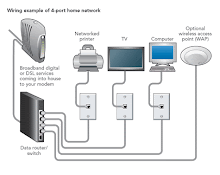With dissatisfaction over the Vista operating system persistent, can Microsoft right the OS's wrongs with its upcoming Vista service pack?Microsoft made the latest beta of Vista SP1 available to the public earlier this month, and after informally testing it for a couple of days, I find my PC is working more reliably--and some tasks especially file copying, take less time. But I was hoping for more out of SP1, such as bigger system performance gains and fixes for Vista annoyances including the oft-criticized User Account Control feature.
And if you are waiting for major improvements to switch to Vista, you'd better hope that Microsoft's SP1 development team goes into overdrive before the service pack's official release and gives you more compelling reasons to make the jump to the OS. Vista undergoes no major overhaul with the SP1 release I looked at. By the way, Microsoft has said SP1 will ship sometime in the first quarter; sources recently said SP1 would appear in the next few weeks.
Key features in Vista Service Pack 1 Release Candidate Refresh (the downloadable beta's official name) include improved reliability, security, and performance. In its description of SP1, Microsoft notes many tweaks are buried deep in the shell of the OS and include hard-to-quantify improvements--for example, support for a couple of emerging standards--Extensible Firmware Interface (EFI) and Extended File Allocation Table (exFAT)--and better compatibility with third-party software and PC peripherals.
SP1 Boosts Reliability, Security, and Performance
On the reliability front, Microsoft says SP1 reduces the time it takes to boot and power down a Vista PC as well as the time it takes a PC to wake from hibernation mode, or to snap back after a photo screen saver has been running. Also fixed is the occasional 10-second delay between pressing CTRL-ALT-DEL at boot up and the appearance of the password prompt. Other fixes address the mysterious problem of how browsing network files eats up more network bandwidth than expected, compared to earlier version of Windows.
And lastly, Microsoft says it has devoted considerable effort to improving file and folder management. SP1 claims to cut the time it takes to extract files to and from a compressed (zipped) folder - but won't say by how much. However Microsoft does make some specific claims about performance gains. It says the service pack reduces by 45 percent the time it takes to copy files from a remote non-Windows Vista system to a SP1 system. A 50 percent gain is seen, Microsoft says, when copying files from a remote SP1 system over a LAN to a local SP1 system.
Microsoft's TechNet has a full list of notable changes in Windows Vista SP1.



